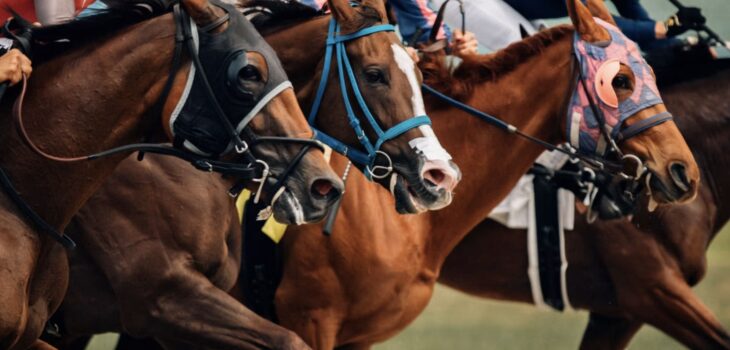
What does bar mean in horse betting
What does bar mean in horse betting?
Horse betting is a popular form of gambling that involves predicting the outcome of horse races. There are many different terms and concepts to understand when betting on horses, one of which is the term “bar”. In this article, we will explain what “bar” means in horse betting and how to interpret it.
What is “Bar” in Horse Betting?
Definition of “bar”
When looking at the odds for a horse race, you may see the term “bar” listed among the horses. This means that any horses with odds longer than the “bar” odds are grouped together and represented by the term “bar”.
How “bar” works in horse betting
The “bar” represents all the horses in a race that have longer odds than a certain point. For example, if the “bar” is set at 20-1, then any horse with odds longer than 20-1 will be grouped together under the term “bar”. This is done to simplify the betting options and make the odds easier to understand.
Examples of “bar” in horse betting
For example, if the odds for a horse race are listed as follows:
- Horse A: 5-1
- Horse B: 8-1
- Horse C: 10-1
- Horse D: 12-1
- Horse E: 20-1
- Bar: 20-1
This means that Horse A, B, C, and D are all individual betting options, while any horses with longer odds than 20-1 are grouped together and represented by the term “bar”.
How to Interpret “Bar” in Horse Betting
Understanding the odds
When betting on horses, it’s important to understand how the odds work. The odds represent the likelihood of a horse winning a race, as determined by the bookmaker. The lower the odds, the more likely a horse is to win.
Analysing the field of horses
When interpreting the “bar” in horse betting, it’s important to analyze the entire field of horses in the race. This includes factors such as the horse’s form, jockey and trainer record, and track and distance conditions.
Deciding whether to bet on or against the “bar” horse
Once you have analyzed the field of horses and the “bar” odds, you can decide whether to bet on or against the “bar” horse.
Factors to Consider When Betting on a “Bar” Horse
Horse form
When betting on a “bar” horse, it’s important to consider the horse’s recent form. If a horse has been consistently finishing in the back of the pack, it’s unlikely that they will suddenly perform well.
Jockey and trainer record
The jockey and trainer can also play a significant role in a horse’s performance. It’s important to look at their records and consider their past success when deciding whether to bet on a “bar” horse.
Track and distance conditions
Different horses may perform better or worse depending on the track and distance conditions. It’s important to consider how these factors may impact the “bar” horse’s performance.
Strategies for Betting on a “Bar” Horse
Betting on the “bar” horse to win
Some bettors may choose to bet on the “bar” horse to win, as they may see it as an opportunity to get long odds and potentially make a big payout.
Betting against the “bar” horse
Other bettors may choose to bet against the “bar” horse,
Strategies for Betting on a “Bar” Horse
Once you have considered the factors mentioned above, there are several strategies you can use when betting on a “bar” horse.
One strategy is to bet on the “bar” horse to win. This strategy can be risky, as the “bar” horse is typically seen as an underdog with low odds of winning. However, if you believe that the “bar” horse has a chance to win, placing a win bet on it can result in a significant payout.
Another strategy is to bet against the “bar” horse. This strategy involves betting on one or more of the other horses in the race to win, place, or show. If the “bar” horse does not perform well, you can potentially win a significant payout with this strategy.
Finally, you can also use the “bar” horse in exotic bets. Exotic bets are types of bets that involve multiple horses in a single wager, such as exactas, trifectas, and superfectas. Including the “bar” horse in an exotic bet can increase your potential payout, but it also increases the complexity of the bet and requires careful consideration of the other horses in the race.
“Bar” Horse in Horse Racing Exotics
When using the “bar” horse in exotic bets, it is important to understand how it can affect your bet. For example, if you include the “bar” horse in an exacta bet with another horse and the “bar” horse finishes in a dead heat with another horse, your bet may be affected.
Additionally, including the “bar” horse in exotic bets can sometimes result in a smaller payout, as many bettors tend to include the “bar” horse in their bets. However, if the “bar” horse does not perform well, it can result in a larger payout for those who did not include it in their bets.
In conclusion, understanding the term “bar” in horse betting is essential for making informed wagers. While the “bar” horse is typically seen as an underdog, it can still be a valuable bet in certain situations. By considering the factors mentioned above and using the strategies outlined in this article, you can make more informed bets on the “bar” horse and potentially win big in horse racing. However, it is always important to bet responsibly and consider all factors when placing your wagers.









